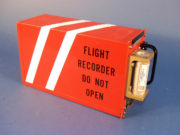
One message that came through loud and clear during the Foundation’s 71st annual International Air Safety Summit (IASS) in Seattle was that the aviation community needs to do a better job of implementing the safety recommendations and risk mitigations that result from accident and incident investigations. And, unfairly or not, much of the responsibility was laid at the feet of regulators.
Perhaps the most adamant of the speakers who addressed the issue was Kathy Fox, chair of Canada’s Transportation Safety Board (TSB). She said that 20 years after the crash of Swissair Flight 111, many of the 23 recommendations that came out of the largest and longest investigation in TSB history have been implemented — and have changed aviation safety. But she also pointed out that there is still work to be done. Of the 23 recommendations, the implementation of nine has been assessed as “fully satisfactory”; another nine have been assessed as “satisfactory in part”; two are “satisfactory intent”; two are “unsatisfactory”; and one has been labeled as “unable to assess.”
Fox also noted that “slow progress on addressing TSB recommendations” is on TSB’s Watchlist 2018 of top safety issues facing Canadian transportation. According to TSB, 62 of the 598 recommendations it has issued since 1990 are at least 10 years old and have yet to be “fully addressed.” Of that 62, 45 involve aviation, with 40 of those recommendations addressed to Transport Canada, two to the U.S. Federal Aviation Administration and three to European aviation authorities. “The TSB has made several recommendations since the 1990s for improved flight data recorders and cockpit voice recorders, but Transport Canada still has not harmonized Canadian requirements with international standards,” according to the latest Watchlist.
But Fox wasn’t the only IASS presenter to bring up the subject. Flight Safety Foundation Fellow Jim Burin said the industry is very good at developing interventions through improvements in training, technology and regulation. “But what we’re really not good at always is implementing them. … We need to make sure that interventions we have worked so hard to create are being used.” He added that it’s “pretty rare to have an accident that we don’t already know how to prevent.”
In the interest of fairness, implementing safety recommendations often is not a simple matter for regulators or industry. A variety of factors, such as technology, operational issues and cost, come into play. And there are external factors as well. For example, in the United States if a federal agency wants to implement a new regulation, it has to identify two existing regulations to be dropped.
Aviation is as safe as it is today because of decades of collaboration by safety professionals throughout industry and government. We are used to overcoming hurdles, technological or otherwise. As 2018 comes to a close, let’s commit to redoubling our effort to learn from past accidents and incidents and implementing the recommendations and mitigations that will assure continued safety performance improvement.


